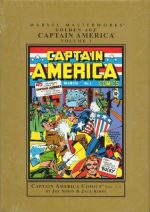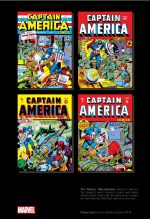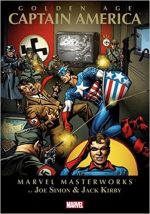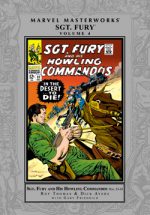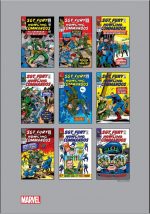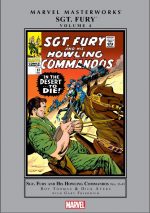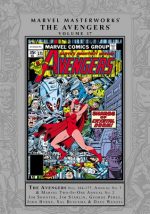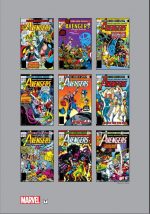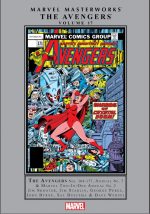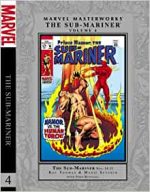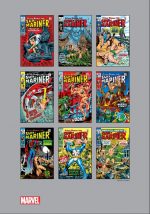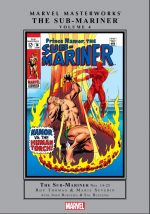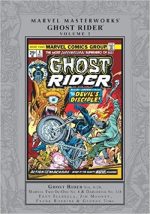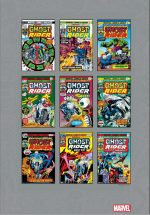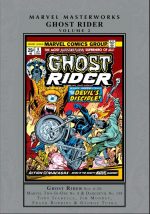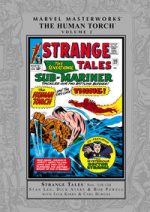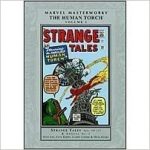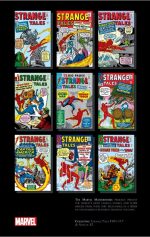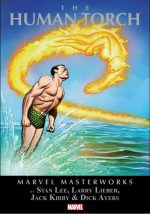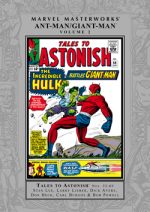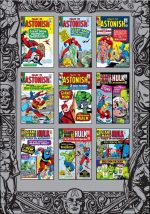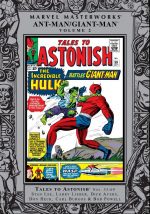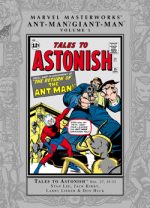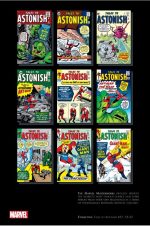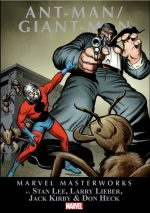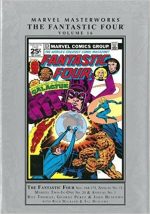
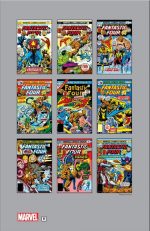
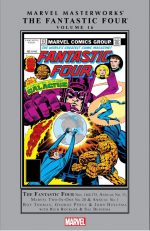
By Roy Thomas, Bill Mantlo, George Pérez, John Buscema, Rich Buckler, Sal Buscema Joe Sinnott & various (Marvel)
ISBN: 978-0785188452 (HB)
Monolithic Marvel truly began at the end of 1961 with the adventures of a small super-team who were as much squabbling family as coolly capable costumed champions. Everything the company produces now is due to the quirky quartet and the groundbreaking, inspired efforts of Stan Lee and Jack Kirby. Happy Anniversary, all…
With Lee & Kirby long gone but with their mark very much still stamped onto every page of the still-prestigious title, this full-colour compendium – available in hardcover and digital editions – collects Fantastic Four #164-175, Fantastic Four Annual #11 and a crossover epic from the first Marvel Two-In-One Annual #1 and #20 of the monthly MTIO: cumulatively spanning November 1975 to October 1976.
What You Should Already Know: maverick scientist Reed Richards, his fiancé Sue Storm, their close friend Ben Grimm and Sue’s teenaged tag-along little brother Johnny miraculously survived an ill-starred private space-shot after cosmic rays penetrated their stolen ship’s inadequate shielding. As they crashed back to Earth the uncanny radiation mutated them all in unimaginable ways…
Richards’ body became astoundingly elastic, Sue gained the power to turn invisible and project forcefields whilst Johnny could turn into living flame and tragic Ben devolved into a shambling, rocky freak. They agreed to use their abilities to benefit mankind and thus was born the Fantastic Four.
Following another effusively fact-filled Introduction from writer/editor Roy Thomas, a new direction begins with #164 (part one of a reconditioned yarn originally intended for Giant-Size Fantastic Four), courtesy of Thomas and neophyte illustrator George Pérez, backed up by veteran inker Joe Sinnott. ‘The Crusader Syndrome!’ finds the team battling a veteran superhero gone bad since his last outing as Atlas-Era champion Marvel Boy.
The Crusader wages savage war on the financial institutions whose self-serving inaction doomed his adopted Uranian race in the 1950s. However, his madness and savagery are no match for the FF and ‘The Light of Other Worlds!’ sees his apparent demise. It also sparks many successful additions to Marvel Continuity, such as new hero Quasar, the 1950s Avengers and Agents of Atlas whilst introducing Galactus‘ herald-in-waiting Frankie Raye as Johnny’s new girlfriend …
Vince Colletta inks #166 as ‘If It’s Tuesday, This Must be the Hulk!’ sees the team hunting the Gamma Goliath with a potential cure for Bruce Banner. Sadly, military treatment of their target enrages fellow-monster Ben Grimm who unites with the Hulk to menace St. Louis, Missouri as ‘Titans Two!’ (with Sinnott back on inks).
Constantly bathed in Gamma radiation, Ben is permanently reduced to human form and, as Rich Buckler pencils #168’s ‘Where Have All the Powers Gone?’, Reed is forced to replace him with Hero for Hire Luke Cage. The former Thing has his greatest dream realised at last, but happiness still eludes him and events take a worse turn in #169 as ‘Five Characters in Search of a Madman!’ sees Cage attack his new teammates thanks to the machinations of a veteran FF foe…
Pérez and Sinnott reunite for concluding chapter ‘A Sky-Full of Fear!’ as Ben returns to his team and spectacularly saves the day wearing a Thing exoskeleton suit built by Reed. The original and genuine is back at last (sort of), but there’s no time to pause for applause…
The yarn segues directly into Fantastic Four Annual #11 which features time-travel saga ‘And Now… Then… the Invaders! by Thomas, John Buscema & Sam Grainger, wherein Marvel’s First Family flash back to 1942 to retrieve a cylinder of miracle-metal Vibranium. When it somehow fell into Nazi hands it had started unwriting history as a consequence…
On arrival, the FF are attacked by WWII super-team The Invaders – comprising early incarnations of Captain America, Sub-Mariner and the original, android Human Torch. The time-busting task goes better once all the heroes finally unite to assault a Nazi castle where the Vibranium is held, but after the quartet return to their own repaired era, Ben realises the mission isn’t over yet…
Thanks to Uatu the Watcher, the action continues in Marvel Two-In-One Annual #1 as – with the present unravelling around him – Ben blasts back to 1942. ‘Their Name is Legion!’ (Thomas, Sal Buscema, Grainger, John Tartaglione & George Roussos) finds him linking up with Home Front Heroes the Liberty Legion (collectively The Patriot, Thin Man, Red Raven, Jack Frost, Blue Diamond, Miss America and The Whizzer) to thwart Nazis Skyshark and Master Man, Japanese agent Slicer and Atlantean turncoat U-Man‘s invasion of America.
The battle proves so big, it spills over and concludes in Marvel Two-In-One #20 (October 1976): a shattering ‘Showdown at Sea!’ pitting the myriad heroes against diabolical Nazi boffin Brain Drain, courtesy this time of Thomas, Sal B & Grainger.
Cover-dated June, Fantastic Four #171 reveals ‘Death is a Golden Gorilla!’ (Thomas, Pérez, Buckler & Sinnott) as a giant alien anthropoid rampages through Manhattan until corralled by the FF. Calmed and physically reduced to standard gorilla proportions, the talking ape delivers a desperate plea for help from the High Evolutionary…
Bill Mantlo scripts Thomas’ plot and Pérez & Sinnott excel themselves as ‘Cry, the Bedeviled Planet!’ sees the heroes head for the other side of the Sun to save Counter-Earth from certain annihilation only to meet their nemesis in the depths of space…
Thomas writes and John Buscema steps in as penciller with #173’s ‘Counter-Earth Must Die… At the Hands of Galactus!’ Inexplicably, the world-devourer debates minor deity High Evolutionary: offering hope to his intended repast before despatching the heroes across the universe in search of a planet that will voluntarily sacrifice itself for Counter-Earth…
‘Starquest!’ (Thomas, Buscema & Sinnott) follows each unsavoury search to its logical conclusion, but as the Evolutionary abandons rhetoric for cosmic combat in a desperate delaying tactic, Sue Richards accidentally locates a civilisation willing to make the ultimate gesture…
Returned and augmenting the Evolutionary, a reunited FF attack Galactus ‘When Giants Walk the Sky!‘ (drawn & inked by JB), with the Devourer delivering a cruel delayed punishment to Ben before consuming the planetary substitute and realising he has been tricked in a bizarre and wry conclusion that only adds fresh complications to the First Family of the Marvel Universes…
To Be Continued…
This power-packed package also includes the covers (by freshly returned Jack Kirby) and all-new material from The Fabulous Fantastic Four Marvel Treasury Edition #11; house ads and cover and splash page by Dave Cockrum & Sinnott from November 1977’s Marvel Super Action #4 which reprinted Marvel Boy stories from the early 1950s.
Although the “World’s Greatest Comics Magazine†never quite returned to the stratospheric heights of the Kirby era, this later collection offers a tantalising taste-echo of those glory days. These extremely capable efforts are probably most welcome to dedicated superhero fans and continuity freaks like me, but can still thrill and enthral the generous and forgiving casual browser looking for an undemanding slice of graphic narrative excitement.
© 1975, 1976, 2017 Marvel Characters, Inc. All rights reserved.

